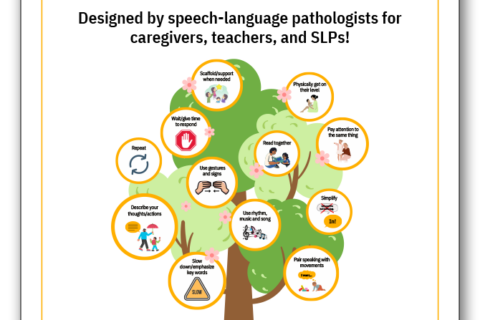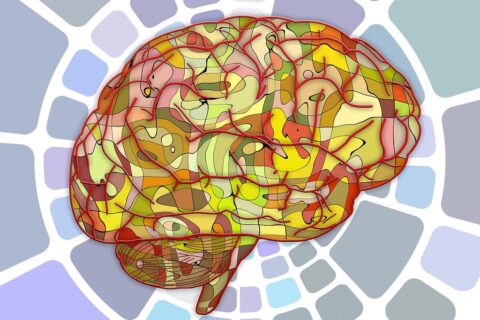Slurred Speech: What Causes Dysarthria?
Dysarthria refers to a group of disorders that affect the way speech sounds. It stems from neurological conditions that affect how muscles control and coordinate the organs required for speaking. There are many different types of dysarthria that can lead to a wide range of symptoms. Some dysarthrias may cause speech to sound slurred, while others may educe hoarse and strained vocal qualities. This blog will examine what causes dysarthria and how speech therapy can help treat it.
What Is Dysarthria?
Dysarthria is a voice and speech condition that affects how we talk, because the muscles have difficulty moving with the necessary speed, strength, range of motion, timing, and accuracy required for crisp, clear speech and vocal expressivity.
This difficulty can impact the muscles of respiration, phonation (how the vocal folds vibrate), articulation, prosody (vocal expression), and resonance.
While many people associate dysarthria with slurred speech, it can also cause:
- Difficulty regulating vocal loudness (too loud or too quiet)
- Nasal voice quality
- Strained voice quality
- Hoarse voice quality
- Breathy voice quality
- Speech that sounds choppy and effortful, because it is difficult to say more than a few words in one breath
- Limited vocal expressivity – may sound monotone
- Difficulty precisely articulating multisyllabic words due to difficulty coordinating movements of tongue, lips, cheeks, and mouth
- Difficulty controlling rate of speech that is too slow or very fast
Types of Dysarthria
There are various types of dysarthria. A person can experience one or more types of dysarthria concurrently. Each subtype is associated with neurological changes to a specific area of the brain which cause a specific cluster of voice and speech symptoms.
- Ataxic: This type occurs when there is a lesion in the cerebellar control circuit. It can cause issues with articulatory precision leading to sound distortions and a slowed rate of speech.
- Flaccid: This type occurs when there are lesions affecting the lower motor neuron system. It can cause muscles weakness resulting in hypernasality and breathy vocal quality as well as imprecise articulation.
- Hyperkinetic: This type of dysarthria is associated with the basal ganglia control circuit. It can cause involuntary muscular movements such as tics and tremors and may make it difficult to control vocal loudness. The voice may experience involuntary stops and it may be hard to vary intonation to convey expression.
- Hypokinetic: This type is also related to the basal ganglia control circuit. It can cause slowed or reduced muscular movements and is associated with quiet a monotone voice and a fast rate of speech.
- Mixed: This type occurs when damage occurs to more than one area of the motor system, leading to a combination of dysarthria types, such as spastic-ataxic or flaccid-spastic. Voice and speech symptoms vary.
- Spastic: This type occurs when bilateral damage occurs to the upper motor neuron system. This type of dysarthria is associated with increased muscle tone and consequent reduced range of motion, which can cause the voice to sound very strained. Speech may also have unequal and uneven stress patterns. Individuals living with spastic dysarthria may report speaking in shorter phrases with reduced loudness and expressivity.
- Unilateral upper motor neuron (UUMN): This type occurs when there is unilateral damage to the upper motor neuron system on one side of the brain. Individuals with UUMN dysarthria may report tongue and facial weakness, hoarse vocal quality, and reduced vocal loudness.
What Causes Dysarthria?
Dysarthria is a neurologically based speech disorder that can make it difficult to breathe, voice (phonate), and articulate sounds and words with ease and efficiency. These subsystems work together in a balanced way to produce speech. Disturbances or weaknesses in any of the muscles involved in the speech systems make it hard to speak with adequate loudness, clarity, and comfort. Anyone experiencing neurological differences or changes may observe alterations to their voice and speech known as dysarthria.
Many living with dysarthria share that they have difficulty participating in social situations, such as speaking on the phone or meeting up with friends. Difficulties with speaking can affect one’s comfort communicating with others, ultimately diminishing one’s communicative confidence and participation in life activities.
Dysarthria is a symptom associated with many neurologically-based health conditions, particularly:
- Stroke
- Tumor
- Traumatic brain injury
- Parkinson’s disease
- Cerebral Palsy
- ALS
- Myasthenia Gravis
- Multiple Sclerosis
- Huntington’s disease
It is important to note that slurred speech can also be a side effect or symptom of other conditions not related to dysarthria. Certain medications may cause slurred speech. Dehydration may also cause slurred speech. In some cases, slurred speech is an initial symptom of a stroke.
If you are experiencing slurred speech, it is strongly advised to seek a medical evaluation as soon as possible to determine the cause.
How Is Dysarthria Diagnosed?
Dysarthria is diagnosed by a medical professional, such as a neurologist or a licensed speech-language pathologist (SLP). A trained speech-language pathologist will guide you through a series of tests to gather baseline data about various aspects of your voice and speech and to better understand your needs and goals.
This will include a thorough oral motor examination and oral pharyngeal sensorimotor examination of swallowing to assess the movement, coordination, and neurological function of various speech organs.
Other exercises may include sustaining certain sounds such as a long “ah” or “zee,” gliding your pitch, reading, and of course talking.
Your speech-language pathologist will consider your medical history along with testing results and observations during the evaluation to determine the underlying physical cause of your speech and voice difficulties.
Which Speech Therapy Techniques Can Help Treat Dysarthria?
There are many well-researched, evidence-based techniques to help you or a loved one speak with greater ease and clarity when living with dysarthria.
Your speech-language pathologist will consider your medical history, symptoms, strengths, and weaknesses noted during the evaluation process. Experts also examine a person’s responsiveness to trialed therapy techniques and other factors, including personal goals and professional demands to develop a plan with personally tailored techniques that will help you improve your communication.
These may include training in optimal posture and breathing techniques along with strategies to control rate of speech will improve respiratory-phonatory coordination. Many individuals benefit from pacing strategies and other techniques to increase articulatory coordination and precision.
At Open Lines®, our clinicians are specially trained in LSVT LOUD®, known internationally as the gold standard approach for respiratory-voice-speech disorders in people with Parkinson’s and other neurologically based communication disorders. Those who are candidates are trained to use greater amplitude speech motor movements to produce voice and speech that is louder and clearer. Researched benefits include significant improvements to vocal quality and the overall strength, coordination, and endurance of the entire motor-speech system to support improved ease, comfort, and intelligibility of speech.
Dysarthria Treatment at Open Lines®
Regardless of what causes your dysarthria, our trained speech-language pathologists have years of experience to help treat your speech conditions.
If you’re struggling with communication difficulties, it’s time to turn to Open Lines®. Contact us via phone (212-430-6800), email [email protected], or by filling out our convenient contact form. Improve your communication skills and unlock your potential with Open Lines® Speech and Communication in New York today!
Get in Touch With Open Lines®














